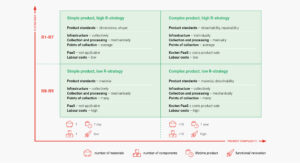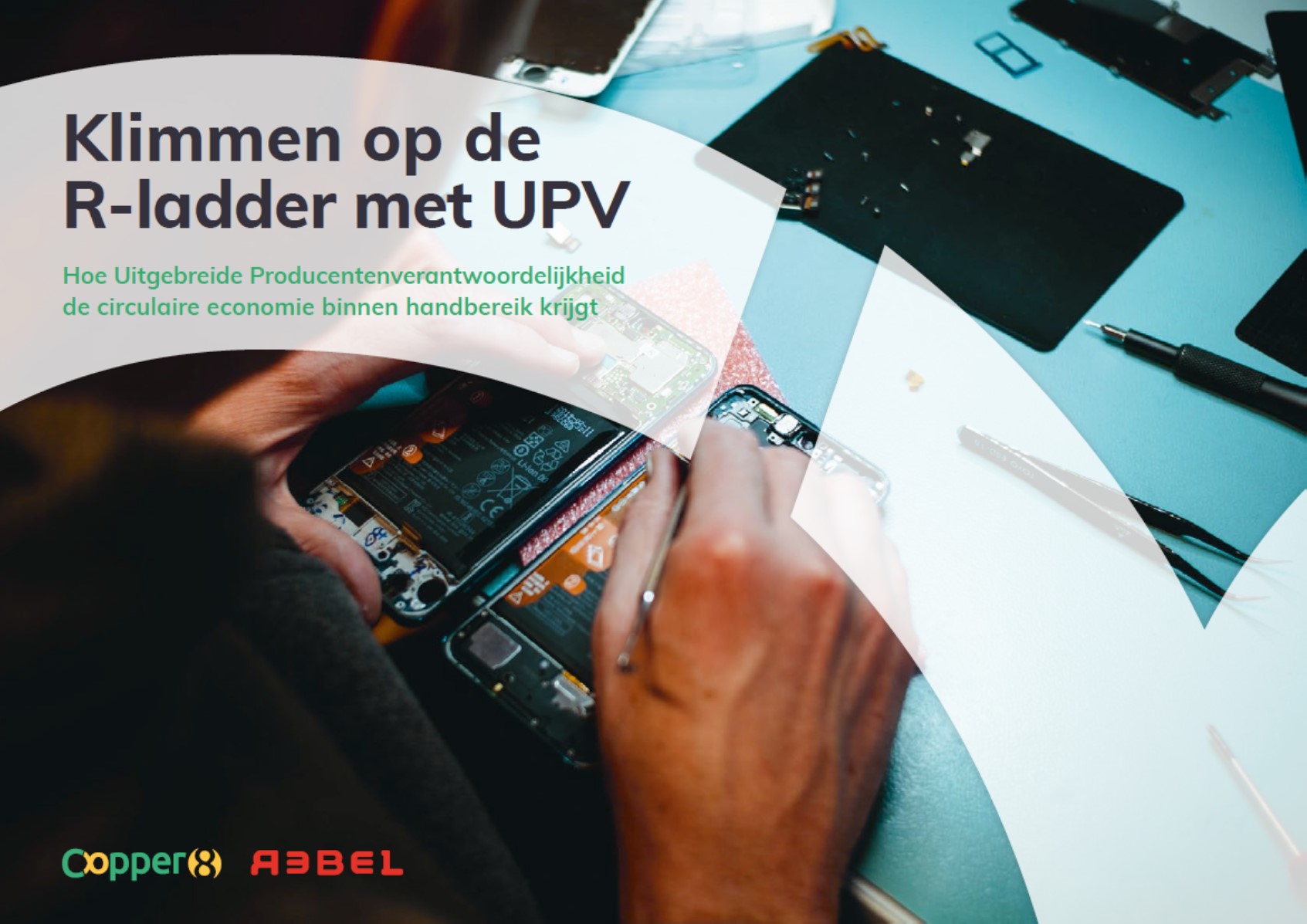Extended Producer Responsibility (EPV) plays an important role in both European and Dutch circular policy. The idea here is that if manufacturers are held responsible for a greater part of products’ life phase (including during use or after disposal), they will design products for reuse, repair and refurbishment. This idea is also in line with the recommendations the Dutch Environmental Assessment Agency (Planbureau voor de Leefomgeving, PBL) made in their 2021 Integral Circular Economy Report.
Unfortunately, we see that the current EPV system is focused on increasingly high-value recycling. There is one clear success story higher up the R-ladder: the EPV system for beer bottles, that has existed for more than 30 years. Aside from this, there are almost no examples at higher levels of the R-ladder. Working with Rebel, we looked for an explanation…
But before we can reveal the answer, we must make it clear that there is no one-size-fits-all solution for EPV. The design of an EPV system must be tailored to two important factors:
- The properties of the product group. With this, we distinguish roughly between the ‘simple’ and short-cycle products (left in the matrix) and the ‘complex’ and long-cycle products (right in the matrix).
- The R-strategy being pursued. Here we distinguish between recycling and recovering (at the bottom in the matrix, >R8) and the highly valuable strategies such as remanufacturing and reuse (at the top in the matrix, <R7).

For EPV systems at a higher R-level, the right preconditions are lacking. These are especially important for complex, long-cycle products such as electronics, vehicles and wind turbines. In the context of current geopolitical developments, we must facilitate high-value reuse of these products and their raw materials (which are often rare metals) as quickly as possible. This can be done, with the following preconditions:
- Measuring circularity. In environmental impact analyses, pay more attention to aspects that are specific to circularity, such as detachability and reparability;
- Fiscal incentives for circularity. Make labor cheaper and virgin raw materials more expensive so that circular product design can be earned back in subsequent life phases;
- Financial stimulation of PaaS concepts. Develop a circular risk management model for financiers to take the opportunities of circular business operations into account (such as higher quality and more control over resources) in addition to the risks.
We are calling on the government, financiers and market parties to ensure these preconditions are implemented correctly and make EPV a success story!
